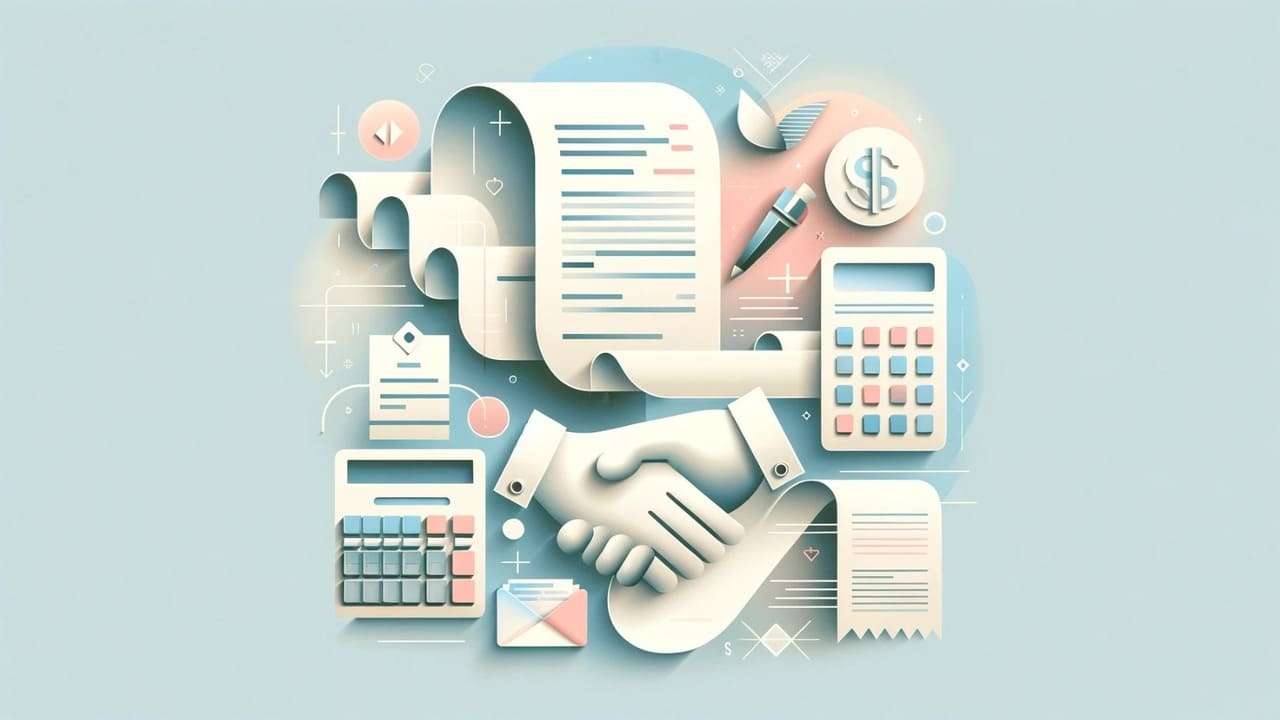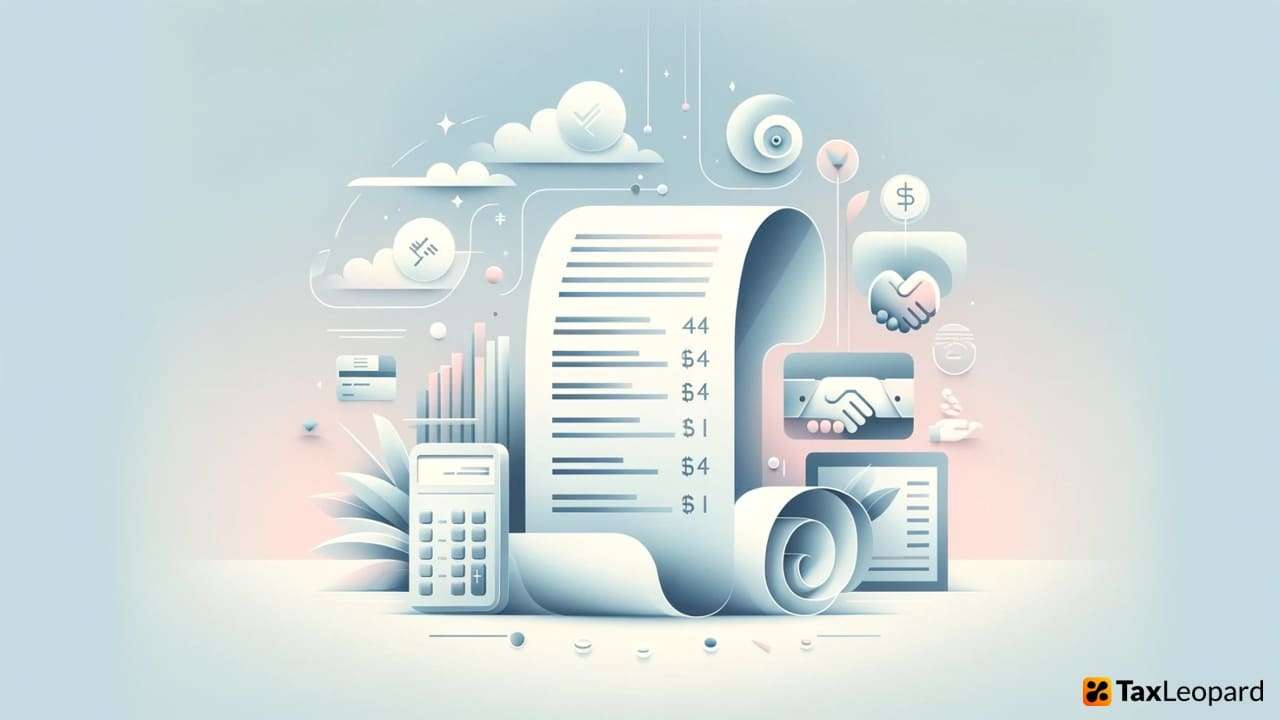Navigating the maze of financial documents can be perplexing, especially when discerning the purpose of an invoice versus a receipt. This confusion often stems from a misunderstanding of their roles in the transaction process. While both are integral to the buying and selling of goods and services, their functions are distinctly different. An invoice is a request to collect payment, issued before the customer pays, laying out the details of the product or service provided. It initiates the invoicing process, marking the start of a financial obligation. On the other hand, a receipt is a proof of purchase, issued after the amount is paid, confirming the completion of a transaction. It provides information about the transaction, solidifying the exchange between buyer and seller. Understanding “Invoice vs Receipt” is not just a matter of terminology; it’s crucial for accurate financial tracking and customer relations.
Overview of Invoice and Receipt
What is an Invoice?
An invoice is a critical financial document that a seller issues to a buyer, usually after delivering goods or services but before receiving payment. It acts as a formal request for payment, detailing the transaction. Invoices are not merely billing tools; they play a crucial role in record-keeping, financial management, and legal compliance for businesses. They track what the business has sold, to whom, and for how much, essential for accounting and tax purposes.
Key Elements of an Invoice:
- Date of Issue: Marks when the invoice was created.
- Invoice Number: A unique identifier for record-keeping.
- Seller’s Contact Information: Includes name, address, and contact details.
- Buyer’s Contact Information: Identifies the recipient of the goods or services.
- Description of Goods/Services: Clear details of what was sold.
- Price and Quantity: Lists each item’s cost and the amount sold.
- Total Amount Due: The complete sum owed, including taxes and discounts.
- Payment Terms: Specifies the deadline and methods for payment.
What is a Receipt?
A receipt is a document that confirms a business has received payment for goods or services. It’s an essential record for both the buyer and the seller, proving that they have completed a transaction. Receipts are crucial for both personal and business financial management, as they provide a clear track of expenditures and income. Buyers often need them for product returns, exchanges, and warranty claims. For tax purposes, receipts are necessary as they validate expenses and can help with deductions or audits. Businesses issue receipts after receiving payment, unlike invoices, which they issue before payment.
Key Elements of a Receipt:
- Date of Transaction: Indicates when the payment was made.
- Receipt Number: A unique reference for the transaction.
- Business Details: Name and contact information of the seller.
- Buyer Information: Often less detailed than on an invoice.
- List of Purchased Items: Details of the goods or services, similar to an invoice.
- Payment Amount: The total paid, often broken down by item.
- Payment Method: How the payment was made (cash, credit, etc.).
- Signature or Verification: Depending on the formality, a signature or stamp confirming the transaction.
Importance in Business Transactions
In the realm of business, understanding the nuances between invoices and receipts is crucial. An invoice is a document issued before payment, detailing the goods or services provided and the amount owed. It serves as a request for payment from a customer. On the other hand, a receipt is proof of payment, issued after the transaction is completed. Both play pivotal roles in the sales process, ensuring clarity and accountability for both parties. For a small business owner, adept invoice management and the ability to issue accurate receipts are essential skills that contribute to smooth financial operations and record-keeping.
Difference Between an Invoice and a Receipt
Key Differences: Invoice vs Receipt
- Invoice is a Request, Receipt is Proof: A seller sends an invoice to the buyer, requesting payment for goods or services provided. The invoice details the amount the buyer owes and includes a due date. Conversely, after receiving payment, the seller issues a receipt as proof of the transaction.
- Content and Timing: An invoice includes information like the identification number, description of services sold, and payment terms. The seller issues it before receiving payment, often immediately after the customer purchases. In contrast, a receipt typically shows the payment amount, method, and date, confirming the seller has received payment for the goods or services sold.
- Function in the Sales Process: The invoice plays a vital role in initiating the sales process’s payment cycle. Small business owners use invoices and receipts to manage cash flow and track sales. On the other hand, a receipt, issued after completing the payment, provides both the customer and business with a record of the completed transaction.
- Types and Forms: Various types of invoices exist, such as standard, pro forma, and online invoices, which sellers can customize using invoice templates. Receipts also vary, ranging from paper to electronic formats, with some systems designed to automatically generate them after payment.
Invoice vs Receipt: Similarities Between Them
‘Invoice vs Receipt’ represents two crucial documents, each with its own significance, yet they share several similarities that are essential to understand. Following are the similarities you must know:
- Integral to Business Transactions: Both invoices and receipts play crucial roles in business transactions. Businesses use them for record-keeping, to ensure they make or receive payments on time, and to reconcile accounts.
- Legal and Financial Documentation: For a small business owner, both documents serve important legal and financial purposes. They can act as proof in disputes, aid in tax calculations, and support during audits.
- Details of Transaction: Both documents provide information about the goods or services exchanged, though the level of detail might vary.
- Electronic Versions: With technological advancements, businesses are increasingly issuing both invoices and receipts electronically, which simplifies the invoicing and receipt issuing process.
Understanding the differences and similarities between invoices and receipts is crucial for anyone involved in business, especially those working in sales or invoice management. It involves not only knowing what each document represents but also understanding how and when to use each one effectively.
The Role of Receipts and Invoices in Business

Receipts and invoices are fundamental components in the sales and accounting cycles of any business. After providing goods or services, the business sends an invoice, signifying the customer’s obligation for payment and typically includes details like a due date and an identification number. When the customer pays for the goods or services, the business issues a receipt. This receipt serves as proof of the transaction, confirming the business has received payment. For accounting purposes, both documents are vital, aiding businesses in tracking sales, managing cash flow, and ensuring they make and receive payments on time.
Can an Invoice Be Used as a Substitute for a Receipt?
Typically, an invoice and a receipt serve different purposes and should not be used interchangeably. However, in some instances, particularly in smaller transactions or informal settings, a paid invoice might function as a receipt. This is true especially when the invoice states that the customer has made the payment and the business has received it, essentially serving as a record of sales and proof of the transaction. Nevertheless, for clear financial tracking and to avoid confusion, businesses should issue a receipt after receiving payment, even if they have previously sent an invoice. Implementing end-to-end payment processing for managing financial transactions can streamline this process, ensuring that invoices, payments, and receipts are handled efficiently and accurately, thereby simplifying record-keeping and compliance tasks.
Navigating Financial Transactions Without a Receipt
Operating without a receipt can be challenging, especially when trying to prove that a payment has been made. In such scenarios, other documents such as a pro forma invoice or a copy of the electronic receipts, if available, might be used as proof. However, they do not carry the same weight as a traditional receipt. For a business, creating a receipt post-transaction is a best practice, even if it’s a simple email receipt. For customers, always requesting and retaining receipts is advisable, as they are usually necessary for returns, exchanges, or warranty claims. In the world of business transactions, understanding and using invoices and receipts appropriately is key to maintaining financial integrity and customer trust.
Common Mistakes to Avoid
Invoicing and Receipt Errors
One common mistake in invoice management is not including all necessary information. An invoice must have clear details about the payment due, including a due date and a detailed description of the services sold. Similarly, when creating a receipt, ensure it accurately reflects the payment received for the goods or services. Errors in these documents can lead to misunderstandings with customers and inaccuracies in financial records. For instance, confusing an invoice with a pro forma invoice, which is more of a quotation, can lead to payment delays.
Best Practices for Accuracy
- Always verify details: Ensure the information on invoices and receipts is accurate and complete.
- Use templates: An invoice template or software can help automatically generate receipts and invoices, reducing the chance of error.
- Understand the differences: Learn the difference between invoices and receipts, and how to use each one correctly. For example, an invoice is sent before receiving payment, while a receipt is proof that payment has been made.
- Stay organized: Keep track of all invoices and receipts for accounting and auditing purposes. Online invoice systems can be particularly helpful in maintaining organization.
- Educate your team: If you have a team, ensure they understand how to issue invoices and receipts properly, which is particularly important in businesses that provide goods or services on credit.
Wrapping Up
Grasping the difference between “invoice vs receipt” is essential for anyone involved in financial transactions. While an invoice signals a pending payment for goods and services, a receipt stands as an acknowledgement of a payment made. This distinction not only aids in proper financial record-keeping but also ensures transparency and trust in business relationships. As we navigate the complexities of financial exchanges, recognizing the role each document plays helps in maintaining order and efficiency in our financial affairs. So, how well do you think you can differentiate between an invoice and a receipt in your next transaction?
FAQs
1. How to use Invoices in Business Transactions?
Invoices are crucial in business transactions for requesting payment. After providing a service or product, businesses issue invoices detailing the transaction, including services rendered, prices, and payment terms. The invoice serves as a record for both parties and aids in tracking sales and managing accounts receivable.
2. Is an Invoice the same as a Receipt?
No, Before the customer makes a payment, the business issues an Invoice as a request for payment, detailing the purpose of the payment. Conversely, the business gives a Receipt after receiving the payment, confirming its receipt. They fulfil different roles in financial transactions.
3. When to Issue an Invoice vs a Receipt?
Businesses should issue an invoice when they render a service or deliver goods, but before the customer makes the payment. In contrast, businesses issue a receipt after the customer makes the payment, serving as proof of the transaction and the completion of payment.
4. Legal Requirements for Invoices and Receipts in Australia?
In Australia, legal requirements for invoices include clear identification as an invoice, ABN of the seller, date of issue, description of goods or services, and the total amount payable. Receipts should indicate the date of the transaction, description of goods or services, the total amount paid, and the seller’s details.
5. What to Include in a Business Receipt?
A business receipt should include the date of the transaction, the name and contact details of the business, a brief description of the goods or services provided, the total amount paid, and the method of payment.




